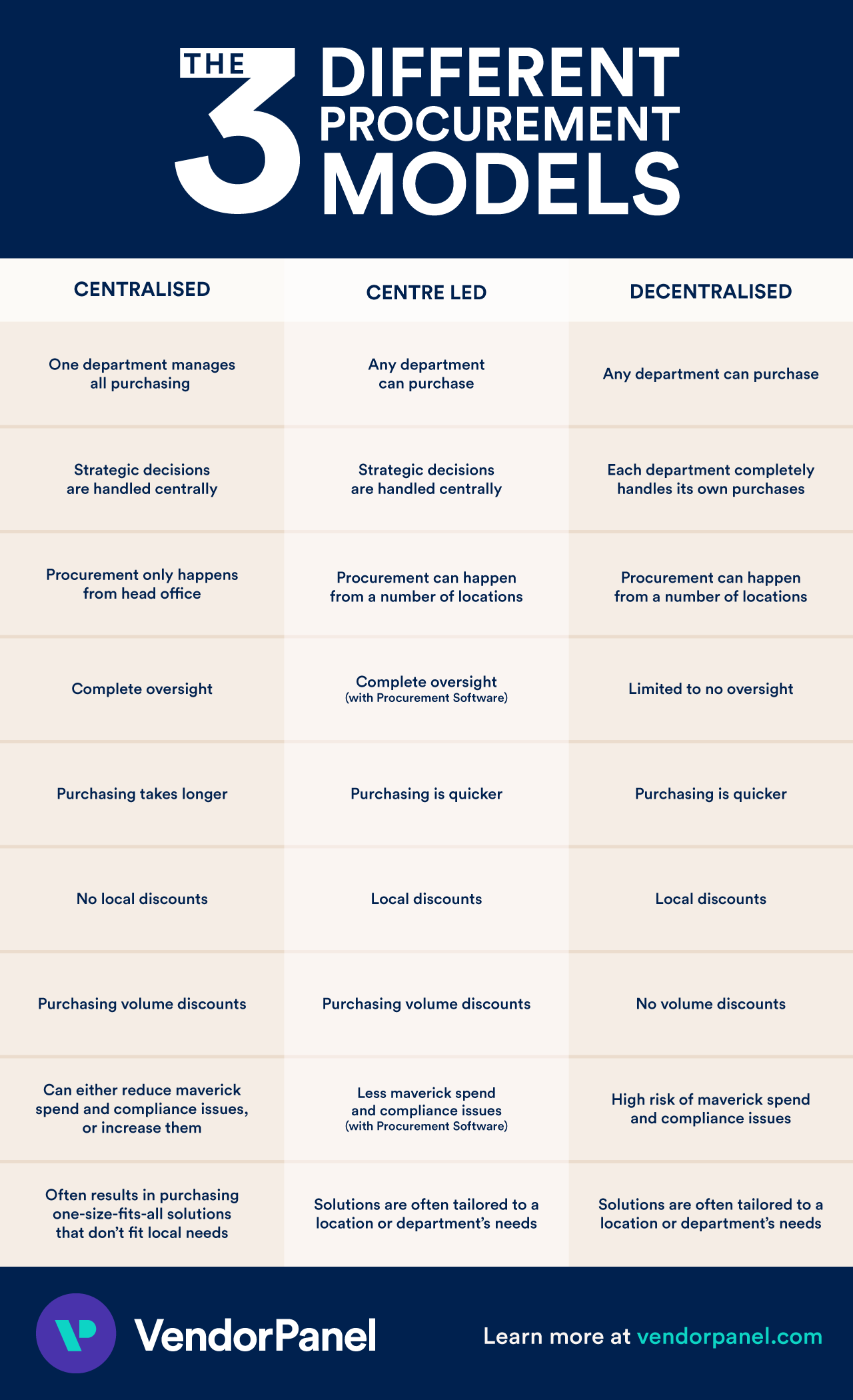
Policy Guide

Procurement Planning

Supplier Discovery

Supplier Management

Go To Market

Compliance Management

Evaluation & Award

Contract Management

Reporting & Analytics
See an overview of all the procurement modules.

Customer Experience

Flexible Ecosystem

World Class Security
See why customers choose the VendorPanel Platform.
Solutions
Simon Parkinson-Bates | 21 Feb 2022 | 6 min read
What is Compliance by Default? How it Helps Procurement

Have you heard the term “compliance by default”? You may have heard it in reference to software, but what exactly does it mean?
Compliance by Default Explained
Compliance by default is a software design concept. Put simply, it is when software is designed to make sure users follow your company-approved policy without needing to think about it. They are presented with a simple, intuitive process that just makes sense.
When a solution is designed this way, it’s more work for staff not to follow policy. When software is built to drive compliance by default, not only does it help ensure people operate within guidelines, but it also reduces administrative burden. That’s because staff have to be supervised less to make sure they’re doing the right thing.
While similar to having a good user experience (UX), compliance by default is a more specific design choice with policy in mind. Every step is designed to reduce administrative burden and ensure staff do the right thing.
This could also be called “compliance by stealth,” since the system and its administrators invisibly guide staff through the proper process.
Coded-in compliance was listed as one of the primary ways to combat fraud and corruption in 2022.
Compliance by Default & Procurement
So why is compliance by default important when it comes to choosing procurement software? To explain that let’s first recap some procurement basics.
In any organisation, procurement will take one of three forms: centralised, decentralised, or centre led.

Let’s say you’re in an organisation where anyone can procure anything - a decentralised approach. However, it’s not long before compliance issues start to crop up, and worse, some business units may be engaging in unethical procurement.
When this happens, some organisations switch to a centralised approach. However, this can create a bottleneck since all purchases have to be done by a handful of people.
Staff often become frustrated with this bottleneck for various reasons: delays in getting what they need, not getting exactly what they want for local requirements, and more. When this happens, the dreaded maverick spend occurs.
To solve these issues, some businesses switch to a centre led model. This often works well – any department can purchase what they need, but they’re guided by the experts.
However, this doesn’t entirely remove the bottleneck. While the central team doesn’t need to handle every little purchase, they’re now tasked with having to make sure staff comply with company policy.
This is where procurement software comes in. By making sure staff use a dedicated procurement solution to go to market, the central team can keep tabs on them and only get involved when required. Everything is captured in the system and is audit ready.
There’s just one catch: what if the users don’t want to use the system? After all, the software is only good if the business units adopt it. As many people know, user buy-in can make or break a new process or system.
Also, if the staff have to remember company policy when they go through the software and take the appropriate steps, they’re likely to forget. This might result in them falling back on their old process, especially if it was easier.
Where Compliance by Default Comes In
By designing procurement software to support compliance by default, this greatly increases user buy-in and reduces the burden on the central team.
When this “administrivia” is removed, suddenly there is time to focus on more strategic objectives. And, as the name suggests, compliance is improved across the board.
Examples of Compliance by Default Solutions
Compliance by default design isn’t specific to procurement. However, procurement solutions benefit greatly from being designed in this way – examples below.
Procurement Planning
For a shining example of compliance by default thinking, look no further than a procurement planning solution. The entire purpose of this type of solution is to make sure users move through the planning stage via a step-by-step workflow.
Users are asked a series of questions, and all they have to do is answer them and provide any relevant information. It allows many tasks to be automated: creating the plan, auto-populating a proposed timeline, reaching out to key parties for approval, declaring conflicts of interest, and more. Everything is time stamped and carried over to the next steps in the process.
The questions are customizable based on your organisation’s policies, and users move through the proper workflow depending on their responses.
Not only does this help with compliance and reducing risk, it also improves process efficiency and spend management.
To learn more on this topic, read: "How the Right Software Can Improve Your Procurement Planning." Alternatively, to learn more about procurement planning solutions, click here.
Interactive Policy Guides
A policy guide solution is similar to a procurement planning solution, in that it asks users a series of questions upfront (e.g., cost bracket, risk level of the procurement). It then channels them to the appropriate procurement plan.
This leaves staff with little doubt in what policy they need to follow. Since this is easy to do and is done before procurement even begins, it helps ensure compliance by default.
Want to learn more about policy guide solutions? Click here.
Contract Management
When you’re managing a contract, you can lose a lot of time chasing up suppliers, making sure they are meeting targets or providing you with the right compliance information.
If a contract management solution (CMS) is designed around compliance by default, this frees up time that would otherwise be spent on these tasks. Routine tasks are automated from the approval process to sending out timely notifications.
“Tools such as VendorPanel take away the administrivia. All that stuff should be handled in the background so you can focus on the relationships,” said Dr Andrew Jacopino, Senior Advisor at Ngamuru Advisory.
Internal checks and balances are also built in. Every action in a CMS is logged, and everything is kept on a single platform.
To learn more on this topic, read: “8 Ways Software Helps with Contract Management Obligations.” Alternatively, if you’re evaluating a CMS, check out our helpful checklist: “The Ultimate Guide to Choosing the Right CMS.”
Evaluation & Award
This is an incredibly sensitive stage in the procurement process. If your procurement software is designed with compliance in mind, it will have certain checks and balances in place, such as ensuring the process can be “locked” until all bids are equally considered.
On top of these safeguards, the procurement team will also have full visibility of buyers’ and evaluators’ actions, and a complete audit trail.
Conclusion
If you don’t have a procurement or contract management solution, or if you’re in the process of sourcing one, make sure it offers compliance by default.
By making sure staff follow policy without having to think about it, this helps reduce risk, administrative burden, improve efficiency and spend management.
Remember: if the software was built with compliance in mind, it takes a big load off yours.
VendorPanel: Your Compliance by Default Solution
Here at VendorPanel, we offer procurement solutions that help your organisation achieve compliance by default. From the early stages of procurement planning right through to contract management, we make life easier for you and your users.
Want to learn about how we can help? Contact us today for a commitment-free chat or a demo.
Sign up to our newsletter
Get insights, news, events and more direct to your inbox.
Further reading
Ready to Know More?
Get in touch, we'd love to hear from you.
















